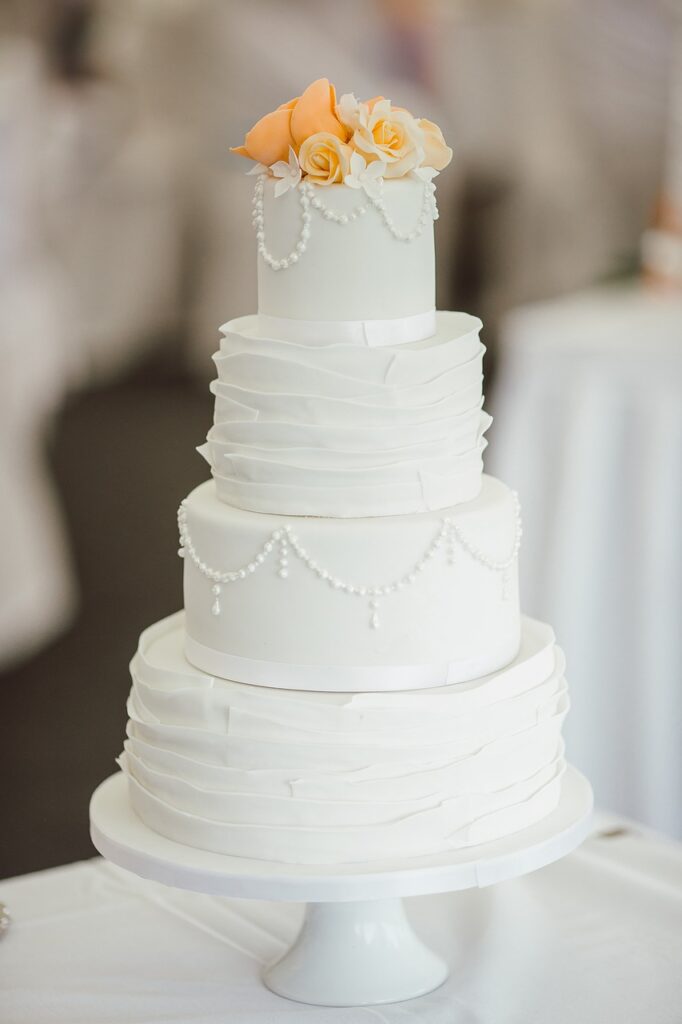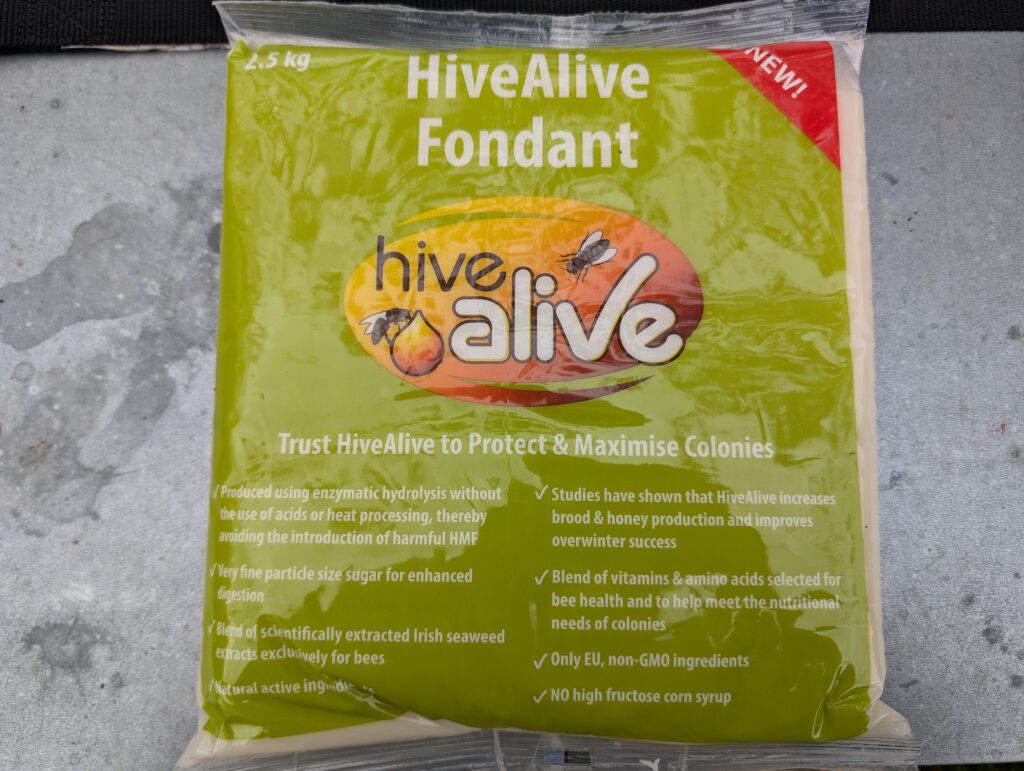2025 is here! Happy New Year!

What are you having as your first meal of the year? For many honey bees, their first meal will be fondant.
If you’re picturing bees tucking in to a beautifully decorated white wedding cake, you’re not far off the reality!

I’d like to leave you with an image of honey bees in formal attire, dining on tiny slices of cake, but I ought to provide you with the facts. The fondant that is best for bees is a little different from the fondant people use on cakes.
First of all, the price of bee fondant is often higher, but there is a reason for that. Let’s take a look at some of the ingredients:
Bee fondant
– seaweed (yes, seaweed!)
– vitamins
– amino acids
– attractant
Baker’s fondant
– cornstarch
– colouring
– flavouring
– high fructose corn syrup
The first three ingredients in the list for bee fondant all contribute to the health of bees. The seaweed and added vitamins are good for the bees themselves, boosting their immune system, while the amino acids are essential for the colony’s growth when spring rolls in and the bees must raise brood. The amino acids form protein which helps bee larvae to develop into fully grown bees. The baby bees do not eat fondant though. Nurse bees are in charge of producing Royal Jelly which is fed to all the different types of larvae for the first three days of their lives and to the queen bee for the entirety of her development into adulthood. So, it is the nurses who consume protein-rich fondant in order to produce the necessary nutrition to feed to the little ones.
Attractant is the last item on the list of ingredients. The attractive aroma is important to ensure the bees can locate the fondant. Baker’s fondant is often odourless, meaning the bees will be unaware of its presence and will miss out on that source of food. This could lead to the catastrophic outcome of the bees starving to death.

Baker’s fondant is also less than ideal because all of the ingredients on its list are not good things to add to the bees’ diet. Plus, eating it might give them the dreaded Food Guilt.
Just in case you’re thinking bee fondant sounds way healthier and that maybe you should switch over to bee fondant yourself, please don’t! It’s designed specifically for bees and bee health; that does not translate to the needs of human bodies.
We understand the benefits of bee fondant (for bees!), but why is it their New Year’s dinner?
Fondant is a cold weather food. You won’t typically see beekeepers supplying their bees with fondant once the weather is warm, but it’s a common sight when it’s chilly. Fondant is ideal in cold weather because it’s mostly solid (think Play-Doh), as opposed to liquid sugar syrup. This is important for keeping the hive dry. A cold, moist hive kills bees over winter. It is a breeding ground for mould and, even worse, disease.
Fluid food and excess moisture in the hive may cause dysentery. This occurs when bees are waiting a long time (sometimes months) for the opportunity to go on a ‘cleansing flight’ and have consumed too much water to be able to hold on any longer. The affected bee shamefully breaks the colony’s cleanliness rule and defecates inside the hive. As well as being gross, this can cause a number of problems. The smell may affect their ability to find food and to communicate through the scent of pheromones, and having feces around the home can increase the spread of other illnesses.
Clearly, liquid food would be a disastrous choice, whereas fondant contributes to keeping the hive dry because bees have to eat it using water. That means any condensation that has formed in the hive can be gathered by the bees for use with their meal.
Some beekeepers like to cook dinner themselves for their bees. Making fondant from scratch could be a fun activity and seeing your bees eating the food you prepared could be a heartwarming moment that gives you an even closer personal connection to your bees.
Getting the fondant just right is tricky. Don’t be afraid of failing and building on those failures to reach the perfect recipe.

As long as you’re careful with which ingredients you use, you’re likely to produce better results than the baker’s fondant. Find sugar with the smallest sugar crystal size you can because this makes it easier for the bees to use it. If you’re unable to add protein, don’t worry. Supplement your homemade fondant with pollen patties and your bees will be all set nutritionally. Good luck!